2021 Volkswagen ID.4 Review: First Drive
FAST FACTS
| Engine: | Single electric motor |
| Output: | 201 hp 229 lb-ft of torque |
| Range: | 250 miles |
| Transmission: | Single speed direct drive |
| US fuel economy (MPGe): | 104/89/97 |
| CAN Fuel Economy: | NA |
| Starting price (USD): | $41,190 (incl. dest.) |
| Price as tested(USD): | $45,190 (incl. dest.) |
| Starting Price (CAD): | NA |
| Price as tested (CAD): | NA |
Volkswagen touts the ID.4 electric crossover as a car that everyone can afford, not just the wealthy.
It’s also the first North American crossover on VW’s new MEB platform. While many reviewers will compare it to the Hyundai Kona EV, or the Kia Niro EV, or any other non-Tesla EV, the truth of the matter is this; to succeed, the ID.4 has to be a compelling alternative to the Tesla Model Y. That’s all, at this point, that matters.
Exterior
The ID.4 is a handsome brute. Decked out in this desirable Blue Dusk Metallic, you’d be forgiven if you thought it resembled the Golf R hero color. The new VW badge is front and center, like on the original Beetle, because there is no radiator on an electric car.
Get a Quote on a New Volkswagen ID.4LED headlights, with adaptive lighting, have some cool checkered effect accents near the projectors. There’s even a light-up accent piece the runs the breadth of the front, with an optional light-up VW logo, that rounds out the front profile.
In the rear, the lighting elements are similar, with a red bar spanning the width of the rear. There are no fake exhaust tips, like what some EV makers do, and an attractive silver piece lines the lower lip in the rear.
In profile, the dark blue and black accents match well, with a silver accent line running across the top of the greenhouse to try to convince the eyes that the roof isn’t as tall as it actually is. This helps VW have more rear headroom without actually compromising space.
Giant 20-inch wheels on our review unit fill out the wheel wells nicely, and they don’t look like eco-focused wheels like you get on some cars, including the Model Y.
Compared to Tesla Model Y, the ID.4 looks a bit more conventional in its shape and design. The Model Y looks a lot like its sedan sibling, the Model 3, just swollen up to the proportions of the crossover.
Interior
Inside, the ID.4 looks and feels high-tech. While it’s only available in a 5-passenger model – the Model Y can seat 7 in some models – it’s roomy and spacious for front and rear-seat passengers for a vehicle in this class.
Our 1st Edition test unit had power front seats that are heated and both have memory functions. It had a heated steering wheel, as well. Our review model also had the upgraded 12-inch infotainment system with wireless Apple CarPlay and wireless Android Auto support. This new, updated infotainment system also features “Hey, I.D.” that triggers the voice command system. It’s designed to perform natural language functions and will even tell a joke. A single joke. The nice thing about the system being connected is that it’ll get updates over time.
Front seat passengers have two USB-C charging ports, as well as a wireless phone charger in the center console. There are four total cup holders in the center console for front-seat passengers, plus additional capacity in the door bins.
In the rear, there are two additional USB-C ports for charging devices, and a cup holder in the fold-down center console. Thankfully, the rear windows roll completely down in the ID.4, which seems like a rarity these days.
SEE ALSO: 2021 Volkswagen Atlas Review: A Passing GradeThe Tesla Model Y’s seats are comfortable, but so are the VW’s. The advantage to the VW right now is that the steering wheel is also heated. The rear windows rolling all the way down is an additional benefit for the ID.4.
All of the materials feel premium inside the VW, even in the rear seats. While it’s not a luxury product, everything feels well put together. The downside of the material is there are a lot of gloss black surfaces, which tend to show fingerprints and scratches easily. The Model Y suffers from similar demerits. While the interior on both cars is good, the VW’s does feel a bit better put together. But each one will appeal to each person separately.
Technology
In technology and infotainment, our test model has VW’s IQ.Drive driver’s assistance suite. This includes all the standard stuff, including adaptive cruise control and blind-spot monitoring. But it also adds a highway driving assistant, similar to Tesla’s base Autopilot suite, which can help with steering. Both systems are a level 2 ADAS setup, but we have to give the nod to Autopilot for its interface with the vehicles surrounding the car. In actual usage, both systems work well, but since this was a first drive event, we didn’t get enough time to see if the VW system false alarms like the Tesla does.
The infotainment system itself in the VW is excellent, with a few caveats. The 12-inch screen looks amazing and renders everything in high resolution with excellent color reproduction. It’s a nicer-looking screen than the 15-inch in the Model Y. But the processing power behind it isn’t as great. The VW’s menus sometimes are slow to respond, and it just doesn’t feel as smooth or streamlined as Tesla’s setup.
While the screen controls everything on the Tesla, VW insists on using capacitive touch buttons for interfacing with nearly everything in the car. I’ll be honest, I don’t care for it.
Maybe after a while, the driver will get used to how the system works, and it becomes second nature. It does look futuristic in a car that feels like the future, but sometimes the buttons don’t respond. Sometimes I’m not sure if I need to tap and slide a button, or if I’m supposed to press it. The Tesla steering wheel can be confusing with the two scroll wheels, but VW’s answer in the ID.4 doesn’t help.
Android Auto and Apple Car Play, especially wirelessly, is amazing. The VW ID.4 is also the first vehicle I’ve driven where it’ll show turn-by-turn directions in the instrument cluster from an Apple Car Play or Android Auto sources like Waze or Google Maps.
Tesla’s navigation system uses real-time traffic to sort things out, and the built-in trip planner will automatically route you to the nearest Supercharger along your route if you need to recharge.
VW’s built-in navigation will perform a similar function, and after an upcoming software update, drivers will be able to have it prioritize Electrify America charging stations. That’s because the ID.4 includes 3 years of charging at Electrify America stations with the purchase of the vehicle.
Charging
That leads to charging. Both the Tesla Model Y and the ID.4 can charge at 11 kW at home on a 48-amp charger.
Out and about, a Model Y will peak at 250 kW at a Supercharging station. The ID.4 caps out at 125 kW at a CCS fast-charging station. VW claims that at a 125-kW station, the ID.4 will charge from 5% to 80% in 38 minutes.
The EPA estimated range on the ID.4 is 250 miles in our rear-wheel-drive 1st Edition model. The Model Y only comes in a Long Range these days, rated at 326 miles.
Driving impressions
The ID.4 drives well out on the road, with reasonable acceleration for a compact crossover. But it doesn’t throw you back the way any Tesla model does.
What the ID.4 does well, though, is highway cruising. It’s quiet at highway speeds – perhaps even quieter than a Tesla – and everything feels planted. It has a top limited speed of 100 mph, which is more than fast enough for any state in the United States.
The Tesla will be faster, and it has an all-wheel-drive compared to the ID.4’s base rear-wheel drive setup. All-wheel drive is coming for the ID.4 later this year, but all of the first cars produced are rear wheel only.
Both cars have relatively numb steering, but both accurately go where you point the car. By default, the ID.4 coasts instead of aggressively regens, where the standard regen on a Tesla is pretty aggressive. Neither vehicle technically offers a 1-pedal driving experience.
Pricing
Pricing is obviously what is going to split the two even more. Since Tesla pulled the Standard Range Model Y from its lineup, the cheapest Model Y carries a $48,990 starting price. The ID.4 starts at $39,995. Additionally, Volkswagen says it has approximately 160,000 more EVs it can sell to get the full $7,500 federal tax credit. Unless things change, Tesla has no more credits.
SEE ALSO: 2020 Volkswagen Jetta Review: All Pumpkin, No SpiceOur $43,995 plus destination 1st Edition is a well-equipped EV. It has more than enough performance for someone coming from a compact crossover, and the fast home charge rate plus access to the growing Electrify America charging network eliminates the need for a higher range EV.
Verdict: 2021 Volkswagen ID.4
The capacitive touch controls are a pain that you might get used to, but the rest of the operating experience is quite enjoyable. When you combine in lots of passenger and storage space, you get a compelling product from a brand that doesn’t have a “T” on the hood. And, unlike most of the competition, the ID.4 will be sold in all 50 states, showing the VW is committed to EVs as more than just compliance vehicles.
It’s understandable why people would opt for the Tesla, but compared to what else is out there, the ID.4 is worth your consideration.
LOVE IT
- VW build quality
- Cool tech
- Futuristic feel
LEAVE IT
- Capacitive touch buttons
- Rear-drive only at launch
More by Chad Kirchner



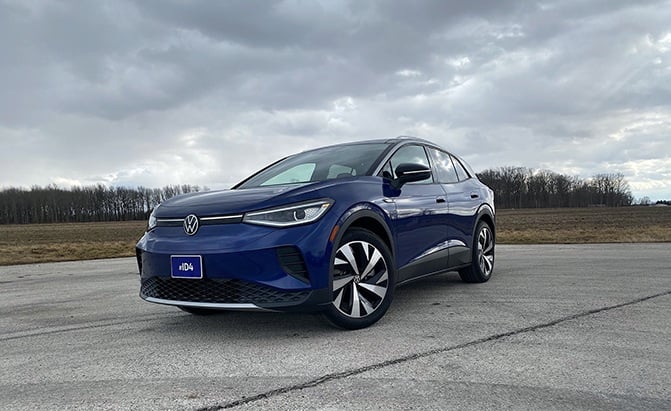



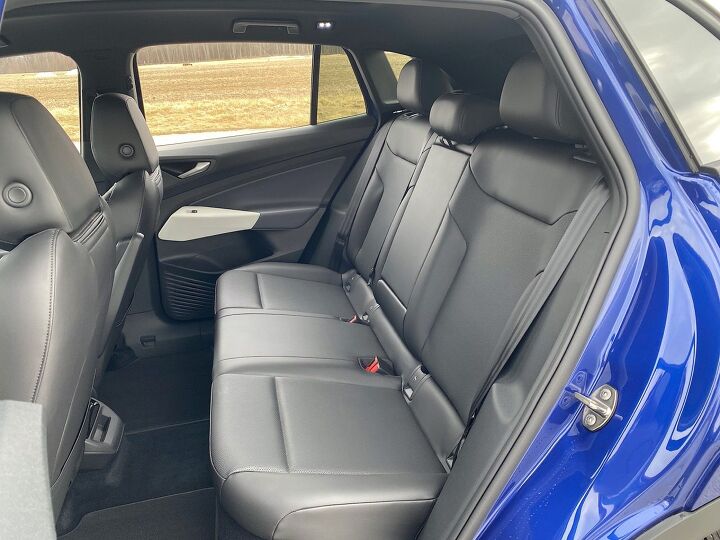





















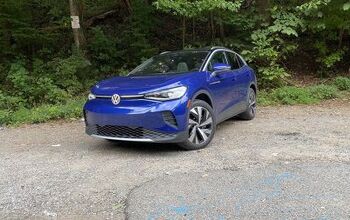
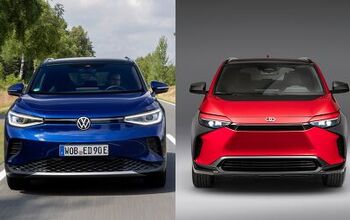
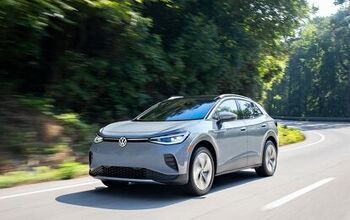

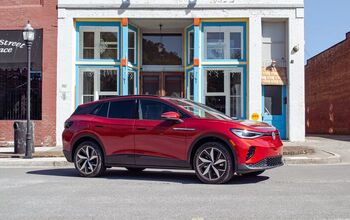





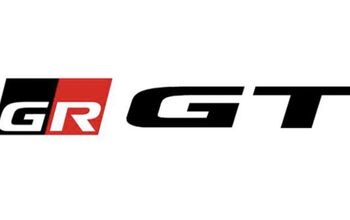



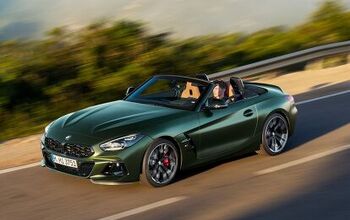
Comments
Join the conversation